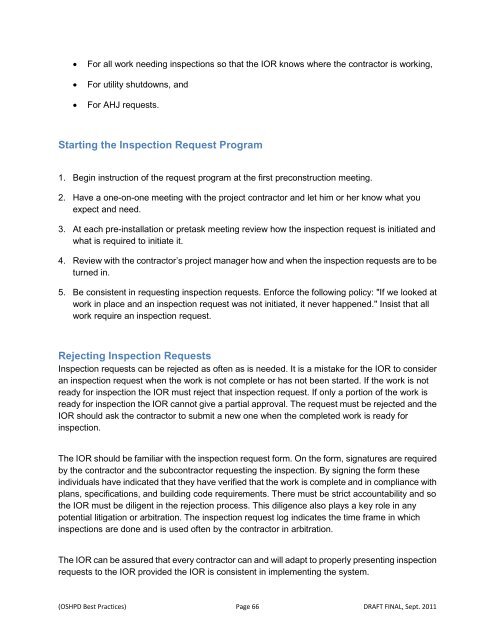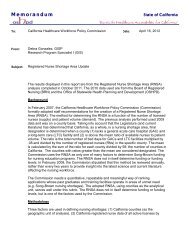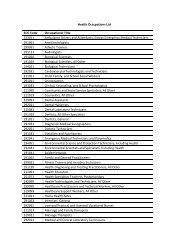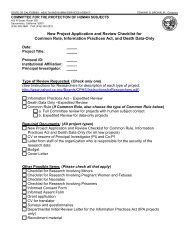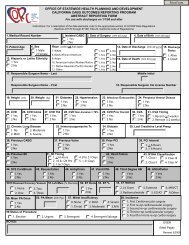Best Practices for Project Management, Design, and Construction of ...
Best Practices for Project Management, Design, and Construction of ...
Best Practices for Project Management, Design, and Construction of ...
You also want an ePaper? Increase the reach of your titles
YUMPU automatically turns print PDFs into web optimized ePapers that Google loves.
• For all work needing inspections so that the IOR knows where the contractor is working,<br />
• For utility shutdowns, <strong>and</strong><br />
• For AHJ requests.<br />
Starting the Inspection Request Program<br />
1. Begin instruction <strong>of</strong> the request program at the first preconstruction meeting.<br />
2. Have a one-on-one meeting with the project contractor <strong>and</strong> let him or her know what you<br />
expect <strong>and</strong> need.<br />
3. At each pre-installation or pretask meeting review how the inspection request is initiated <strong>and</strong><br />
what is required to initiate it.<br />
4. Review with the contractor’s project manager how <strong>and</strong> when the inspection requests are to be<br />
turned in.<br />
5. Be consistent in requesting inspection requests. En<strong>for</strong>ce the following policy: "If we looked at<br />
work in place <strong>and</strong> an inspection request was not initiated, it never happened." Insist that all<br />
work require an inspection request.<br />
Rejecting Inspection Requests<br />
Inspection requests can be rejected as <strong>of</strong>ten as is needed. It is a mistake <strong>for</strong> the IOR to consider<br />
an inspection request when the work is not complete or has not been started. If the work is not<br />
ready <strong>for</strong> inspection the IOR must reject that inspection request. If only a portion <strong>of</strong> the work is<br />
ready <strong>for</strong> inspection the IOR cannot give a partial approval. The request must be rejected <strong>and</strong> the<br />
IOR should ask the contractor to submit a new one when the completed work is ready <strong>for</strong><br />
inspection.<br />
The IOR should be familiar with the inspection request <strong>for</strong>m. On the <strong>for</strong>m, signatures are required<br />
by the contractor <strong>and</strong> the subcontractor requesting the inspection. By signing the <strong>for</strong>m these<br />
individuals have indicated that they have verified that the work is complete <strong>and</strong> in compliance with<br />
plans, specifications, <strong>and</strong> building code requirements. There must be strict accountability <strong>and</strong> so<br />
the IOR must be diligent in the rejection process. This diligence also plays a key role in any<br />
potential litigation or arbitration. The inspection request log indicates the time frame in which<br />
inspections are done <strong>and</strong> is used <strong>of</strong>ten by the contractor in arbitration.<br />
The IOR can be assured that every contractor can <strong>and</strong> will adapt to properly presenting inspection<br />
requests to the IOR provided the IOR is consistent in implementing the system.<br />
(OSHPD <strong>Best</strong> <strong>Practices</strong>) Page 66 DRAFT FINAL, Sept. 2011


